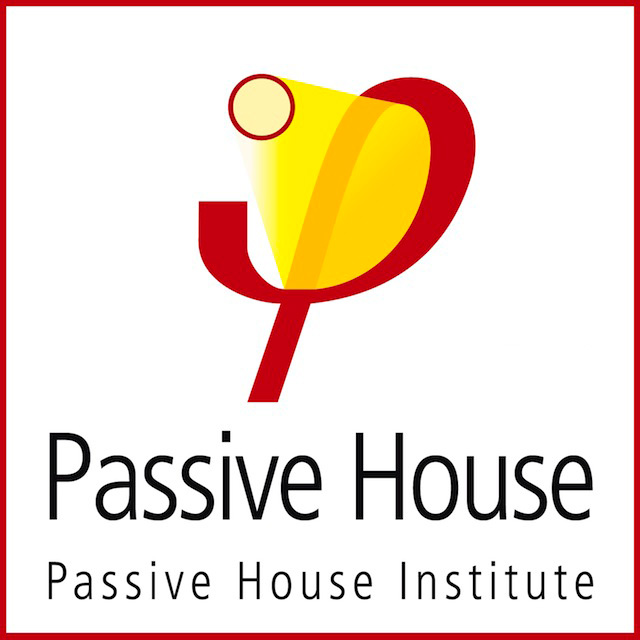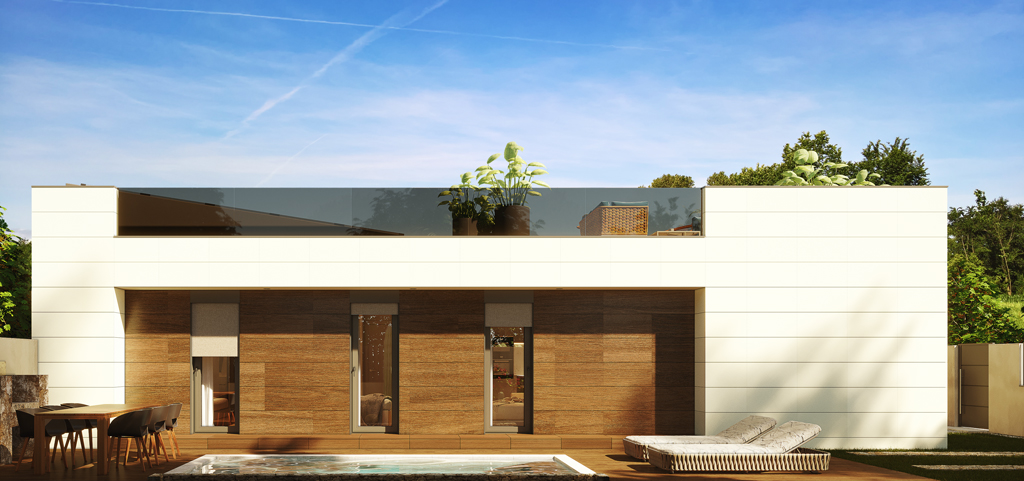Home / Passive House
The Passive House concept is a standard for constructing energy-efficient buildings with a high level of comfort inside at an affordable price.
Passive House is based on design criteria that enable ideal ambient conditions to be maintained inside, achieving energy savings of between 70% and 90% compared to conventional homes. To do so, the homes have optimal thermal insulation that prevents thermal bridges from appearing while using mechanical ventilation with heat recovery, as well as high-performance windows and doors.

These homes boast a list of advantages that make them a profitable alternative residence. The insulations keep the temperature constant inside, as well as adequate levels of relative humidity. The continual air change systems, extracting it and replacing it with oxygen from outside, ensure there is constant, fresh and clean ventilation.
Added to this there is a reduction in energy demands from the home, thereby achieving direct savings for the users. This is why VIVO presents a much more favourable opportunity in regions with extreme climates where the winters are harsh and summers hot, where this situation becomes even more obvious.
Un confort gratificante basado en la cancelación de ruidos externos y la implementación de materiales para mantener temperaturas cálidas dentro del hogar. Vendrás por el ahorro, te quedarás por el confort.
Nuestros hogares tienen una hermeticidad del aire constante. Apartados como la ausencia de puentes térmicos o la ventilación mecánica, nos permite que la temperatura de la casa este siempre regulada, manteniendo siempre el aire limpio para vuestro bienestar.
Los hogares sostenibles se basan en el autoconsumo como fuentes de energía, a través de elementos arquitectónicos que ayudan al medio ambiente de manera indirecta, y así, conseguimos un ahorro energético de hasta el 90%.
Desde VIVO estamos muy unidos con el planeta, así que incorporamos un sistema de autosuficiencia energética, para que nuestros hogares funcionen con energías ecológicas, #MiFilosofía, Mi Vivo
Los hogares sostenibles son únicos y a tu medida. Dependiendo del entorno geográfico, las temperaturas y la orientación de las viviendas, tendrán diferentes aspectos conforme a sus necesidades. Cada casa es un mundo, nos adaptamos a tus necesidades, nos adaptamos a ti.
Passive House homes provide great benefits for the people who live in them, beginning with extraordinary comfort throughout inside, keeping a constant temperature in all rooms. They have large glass areas to capture sunlight and enjoy the best views, while ensuring better rest thanks to their ventilation, noise insulation and temperature.
Of course, the energy savings are very significant and the structure’s impact is also reduced considerably. So there are not only benefits for those who inhabit them, but also for the planet, society and the economy.

In order to begin to plan a Passive House home, we need to take into account the following aspects:
Different aspects related to the home’s future location need to be taken into account, which will affect the start of the project for the home, such as geolocalisation, climate and altitude of the location.
On beginning to draft the technical drawings, as well as constructing the home itself, different topographic characteristics must be taken into account such as the spacing between nearby buildings, the differences in the level of the ground itself, and the properties of urban trees.
Se ha de tener en cuenta diferentes aspectos que repercutirán en el proceso de iniciación del proyecto de la vivienda, como son la geolocalización, la climatología y la altitud de la ubicación. Todos estos aspectos están relacionados con la futura ubicación de un hogar Passive House.
A la hora de empezar con la creación de los planos así como de la propia construcción de la vivienda, se han de tener en cuenta diferentes aspectos topográficos como son el espaciado entre edificios cercanos, los desniveles del propio terreno y las propiedades del arbolado urbano.
Once we know the basic variables to begin planning a Passive House home, we have to know the main characteristics to begin manufacturing, too. These main characteristics are:
Depending on the climate and the location, the necessary thicknesses of the thermal insulation will be calculated in order to achieve greater energy efficiency. This manufacturing stage is crucial, since it is the element that will prevent thermal bridges from appearing and maintain the temperature, as well as keeping noise out of the home.
We optimise the dimensions and locations of the building’s openings, since they are the weakest points of the envelope. It is therefore necessary to install high quality frames and glass to stop energy leaks as much as possible.
Thermal bridges are areas of the thermal envelope where heat or cold is transmitted more easily, in other words where there is a gap in the insulation or it is considerably reduced. Passive House structures are designed in such a way that they prevent this effect, achieving the utmost comfort for the inhabitants.
It is common to find uncontrollable draughts in traditional homes, which get in through unintended holes or cracks, leading to a poor performance in terms of the home’s energy, generating currents of air inside. Passive House homes ensure there is an air-tight, draught-proof surround or envelope to prevent this phenomenon, thereby ensuring the home’s temperature and the quality of the air at all times.
The home’s ventilation works using this system that combines energy efficiency in both winter and summer with health as regards taking into account the oxygen being breathed in Passive House homes.
This is a type of manufacture that guarantees the building’s thermal comfort by heating or cooling the air exchanged to attain proper ventilation. It is designed and built according to the criteria provided for in the Passivhaus standard, which define the most energy-efficient buildings in architecture. Passivhaus buildings are designed using bioclimatic and sustainable criteria. The little supplementary energy they require can easily be covered using renewable energies, making them constructions with a very low energy cost for the owner and the planet.
In order to achieve the Passive House goals, there are five basic principles that must be applied:
1. Install high, continual thermal insulation.
2. Ensure an air-tight envelope to avoid infiltrations from unwanted air.
3. Avoid or minimise thermal bridges.
4. Install high-performance windows and doors.
5. Use a system of mechanical ventilation with heat recovery.
And it is just as important to be able to count on architects certified by the Passivhaus Institute in order to be sure they know how to apply these principles properly, thus achieving your dream home with experience backed by professionals.
Thermal comfort is ensured throughout the year. In winter the temperature won’t fall below 20 ⁰C, whereas in summer it won’t go over 25 ⁰C.
Thanks to the low electricity consumption of passive houses, you can manage to disconnect from the grid with a small installation of photovoltaic panels on the roof. So you can produce the energy you need self-sufficiently to supply your house without paying a single euro to the electric companies.
If you would like to receive information about VIVO SUSTAINABLE HOMES or you have any queries, leave us your name and contact email. We’ll get in touch with you as soon as possible to answer all your questions.
COPYRRIGHT 2025 VIVO
ALL RIGHTS RESERVED
If you still do not have your access data, please request them by sending an email with all your information to: info@vivosostenible.com.
